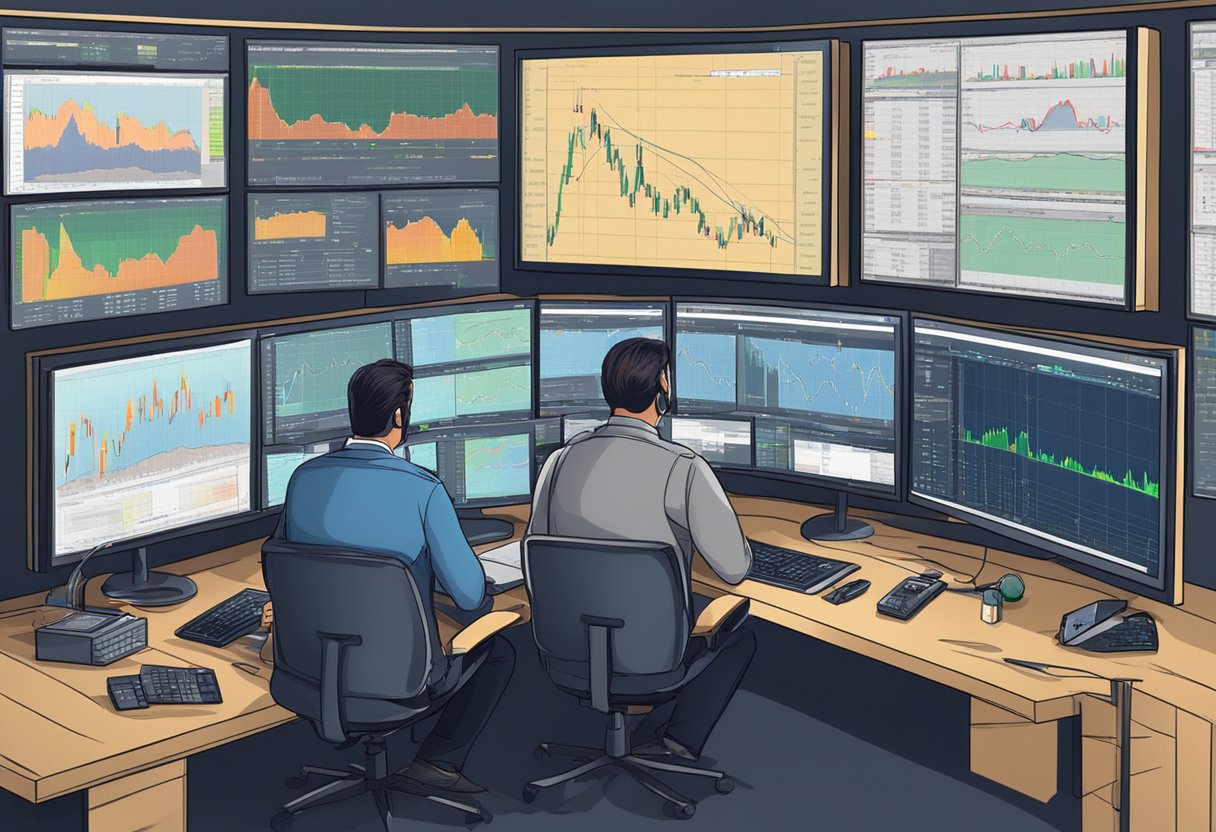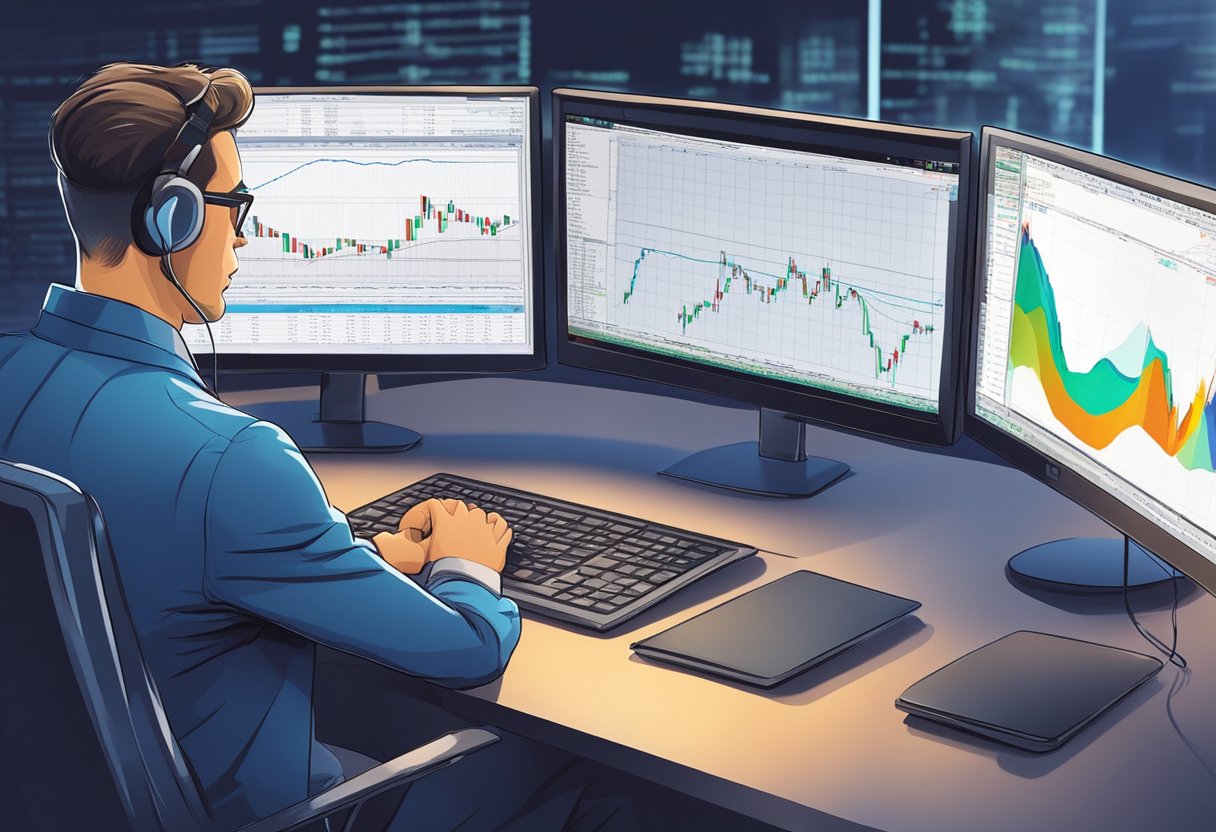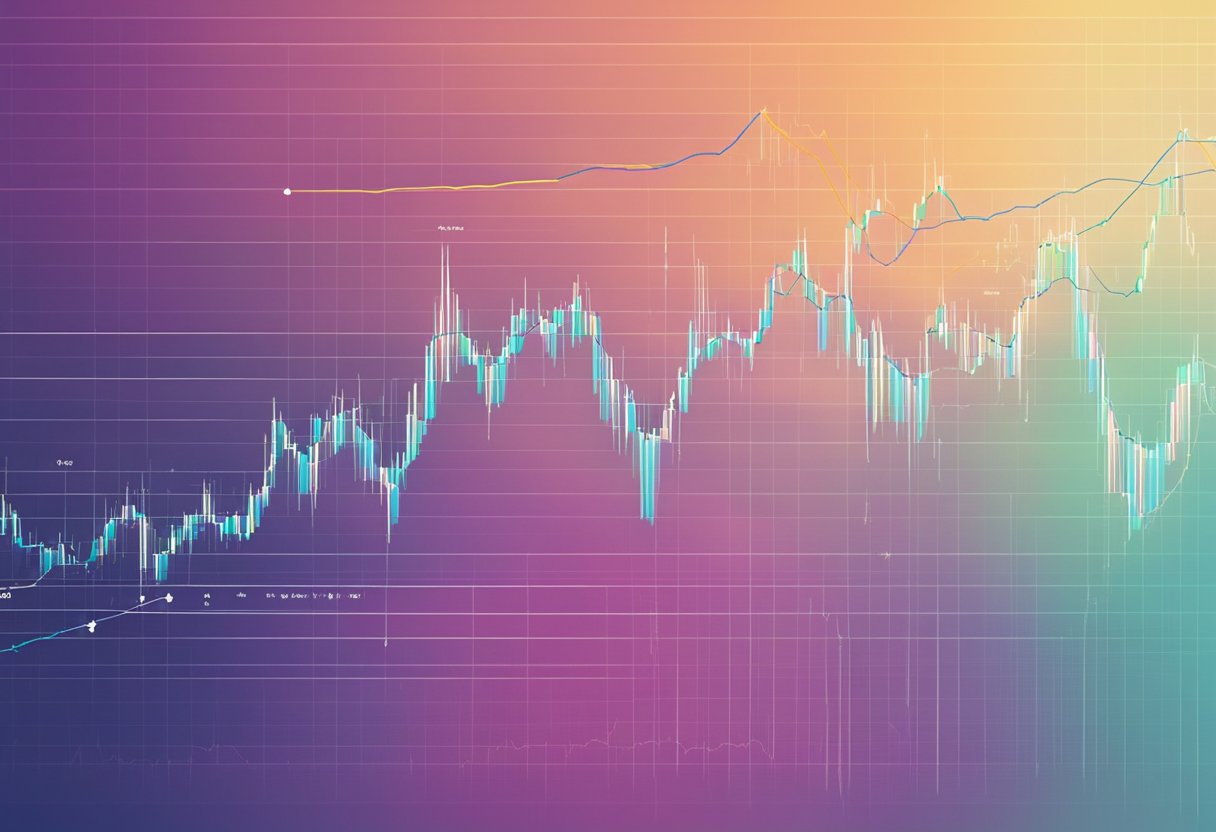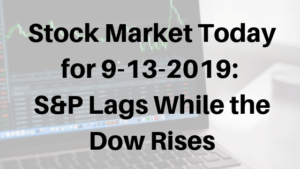Effectively Day Trade Stock Index Futures: A Concise Guide for Success
To effectively day trade the stock index futures requires a comprehensive understanding of market mechanics, technical analysis, and a well-rounded trading strategy. Stock index futures are financial instruments that allow investors to speculate on the future price movements of a particular stock index, such as the S&P 500 or the Dow Jones Industrial Average. As a day trader, the primary goal is to buy and sell these futures contracts within the same trading day, capitalizing on short-term fluctuations in market prices.
Before diving into effectively day trading stock index futures, it’s crucial to have a solid grasp of market knowledge and the various types of stock index futures available. Additionally, preparing your trading account with adequate capital, understanding margin requirements, and implementing risk management strategies are essential components of a successful day trading approach. As a day trader, staying informed about market volatility and interpreting its effect on stock index futures is key to navigating the ever-evolving financial landscape.
Key Takeaways
- Comprehensive market knowledge and a well-rounded trading strategy are essential for effectively day trading stock index futures.
- Account preparation, risk management, and understanding margin requirements are crucial components for success in day trading.
- Staying informed about market volatility and its impact on stock index futures is critical for navigating the financial landscape as a day trader.
Understanding Stock Index Futures
https://www.youtube.com/watch?v=ByPcgtcUbqY&embed=true
Stock index futures are financial instruments that allow investors to speculate on the direction of a specific stock index, such as the S&P 500 or the Dow Jones Industrial Average. They are a type of futures contract based on a stock index, representing a basket of individual stocks. This market is particularly attractive to day traders, thanks to its high liquidity and the availability of leverage.
A stock index future is a legally binding agreement between two parties to buy or sell the underlying index at a specified price on a predetermined future date. The value of the contract depends on the performance of the constituent stocks in the index. For example, if the S&P 500 goes up, the stock index future linked to it will also increase.
To effectively day trade stock index futures, it’s essential to understand the key factors influencing stock indices and the futures markets. These include macroeconomic data, such as employment reports, GDP figures, and interest rate decisions, as well as corporate earnings and geopolitical events. A solid understanding of technical analysis, including chart patterns and trading indicators, is also crucial for successful trading.
Day traders can choose from many different stock index futures, including those tied to major U.S. stock market indices like the S&P 500, the Dow Jones Industrial Average, and the Nasdaq-100. These futures contracts are available on exchanges such as the CME Group and are traded electronically through dedicated trading platforms.
Trading stock index futures can be a powerful strategy for investors, as they offer several benefits, including:
- Leverage: Futures contracts often require just a fraction of the contract’s notional value as margin, allowing for potentially larger gains (or losses) relative to the initial investment.
- Diversification and risk management: By trading stock index futures, investors can hedge their exposure to the underlying stocks and mitigate risks associated with the stock market.
- Tax advantages: Short-term gains from futures contracts are generally taxed differently than stock gains, often at a lower rate.
However, it’s important to remember that trading stock index futures carries significant risks alongside the potential rewards. Day traders must be prepared for the possibility of sudden market movements, and the leverage offered by futures contracts can magnify losses, as well as gains. Therefore, a disciplined approach to risk management and the use of stop losses are essential when trading stock index futures.
In summary, understanding stock index futures and the factors influencing their price movements is crucial for day traders looking to capitalize on short-term market fluctuations. Developing a familiarity with the mechanics and various strategies associated with trading index futures will help investors maximize their potential returns while minimizing risks.
Types of Stock Index Futures
https://www.youtube.com/watch?v=cLrxM2q0GIg&embed=true
Stock index futures are financial instruments that allow investors to speculate on the direction of a specific stock market index, such as the S&P 500 or the Dow Jones Industrial Average. There are various types of stock index futures, each based on different indices and catering to a diverse range of traders. In this section, we will discuss some of the most popular stock index futures and their key characteristics.
The S&P 500 futures contract is based on the Standard & Poor’s 500 Index, which consists of 500 large-cap companies in the United States. This index is widely regarded as a benchmark for the overall performance of the U.S. equity market. The S&P 500 futures contracts allow investors to profit from the price movements of these companies as a whole, rather than trading individual stocks.
E-mini futures contracts are a popular type of stock index futures, and one such example is the E-mini S&P 500 contract. These contracts have a smaller contract size compared to the standard S&P 500 futures, making them more accessible to individual investors. The lower cost of entry allows traders to control higher leverage while using less capital than they would need for a full-sized contract.
Dow futures are based on the Dow Jones Industrial Average, an index consisting of 30 major U.S. companies. This type of futures contract is often used by investors to speculate on the price movements of the overall U.S. stock market, especially those who want to track the performance of some of the largest and well-established blue-chip companies in the country.
NASDAQ 100 futures contracts are based on the NASDAQ-100 Index, which comprises the top 100 largest non-financial companies listed on the NASDAQ stock exchange. This index primarily consists of technology and internet-related companies, making it a popular choice for investors who wish to gain exposure to the tech sector through a single futures contract.
In conclusion, there are various types of stock index futures available for investors to choose from, with each based on a specific index and catering to different trading preferences. The S&P 500, E-mini contracts, Dow futures, and NASDAQ 100 are just a few examples of the stock index futures that investors can use to speculate on the stock market’s movements and hedge their investments.
Importance of Market Knowledge in Day Trading
https://www.youtube.com/watch?v=HLdNQhbrsAw&embed=true
Having a solid foundation of market knowledge is crucial for anyone looking to day trade stock index futures successfully. Experienced traders recognize the importance of staying informed about the latest news and events that could affect the market. By doing so, they can make better-informed decisions when making quick trades.
One essential aspect of market knowledge is keeping up with real-time news. Day traders need to have access to up-to-date information to quickly react to fluctuations in the market. Whether it’s an unexpected economic announcement, a change in interest rates, or geopolitical developments, staying current with the news allows traders to make better decisions about when to enter or exit a trade.
Data analysis is another crucial component of market knowledge. A successful day trader must be proficient in analyzing data, including technical and fundamental indicators, to identify potential trading opportunities. Examining historical trends and using various analytical tools can help traders predict how the market might behave in the future.
In addition to news and data analysis, refining one’s trading experience can significantly impact success in day trading. By continually practicing, reviewing, and refining their strategies, day traders can enhance their abilities and become more confident in their decision-making processes. Gaining experience in various market conditions can be invaluable, as it enables traders to better adapt to sudden changes in the market environment.
In conclusion, improving their knowledge, remaining current with the latest news, and analyzing data are necessary steps for day traders looking to succeed in stock index futures trading. Developing these skills through experience and practice will not only increase one’s confidence but also greatly enhance their overall trading potential.
Account Preparation for Day Trading
https://www.youtube.com/watch?v=BvsSCSHz23U&embed=true
Before embarking on your day trading journey, it is crucial to have adequate account preparation. First and foremost, you will need to choose a broker that offers suitable trading platforms, low commission fees, and excellent customer support. Ensure that your chosen broker provides access to stock index futures markets, such as the E-mini S&P 500 futures (ES).
After selecting a broker, it’s time to set up your trading account. To get started, you will need to deposit sufficient capital into your account. The amount required varies depending on your financial goals, risk tolerance, and the type of futures contracts you plan to trade. Keep in mind that some brokers may require a minimum deposit to open an account. Ensure that you have enough capital to meet the margin requirements for day trading, which are typically lower than overnight trading.
Before diving headfirst into live trading, consider beginning with paper trading. Paper trading, also known as virtual or simulated trading, allows you to practice and refine your trading strategies using a real-time market environment without risking actual capital. This approach is highly recommended for novice traders, as it enables you to gain experience and build confidence in your trading abilities. Some trading platforms offer built-in paper trading features, while others require subscriptions to third-party services.
In addition to account setup and capital allocation, it is essential to have a well-defined risk management strategy in place. This involves setting daily loss limits, establishing stop-loss orders, and determining appropriate position sizes. Implementing a sound risk management plan will help protect your account capital from substantial losses during volatile market conditions and allow you to stay in the game for the long term.
By following these steps on account preparation for day trading stock index futures, you can confidently and knowledgeably embark on your trading journey, equipped with the necessary tools and understanding for success.
Trading Strategies to Effectively Day Trade the Stock Index Futures
https://www.youtube.com/watch?v=IdG82O69IFM&embed=true
When it comes to day trading stock index futures, it’s crucial to have a solid trading strategy in place to increase the probability of profitable trades. Several relevant trading strategies can be employed for a successful outcome in day trading.
One popular strategy is swing trading, which involves holding positions for several days in anticipation of price movements. This approach requires a keen understanding of market trends and monitoring volume changes. In day trading stock index futures, traders can capture smaller price movements within the trading session.
Another effective day trading strategy is scalping. Scalpers focus on making numerous small profits from short-lived price movements throughout the day. To successfully implement this strategy, traders need to closely monitor price changes and trading volumes. By making many trades with small gains, scalpers aim to achieve a cumulative profit by the end of the trading session.
Range trading is another suitable strategy for day trading index futures. It involves identifying specific price ranges or support and resistance levels within which the index futures tend to oscillate. Traders buy at the support level and sell at the resistance level, capitalizing on price fluctuations within these established levels. This strategy relies on technical analysis, as it is essential to determine the correct ranges.
Stock index futures traders can also employ short-selling when day trading, taking advantage of downward price movement. In a short-selling strategy, traders sell index futures they do not own, hoping to repurchase them at a lower price and profit from the price difference. This strategy works well during bearish market conditions, where index futures experience a general decline in value.
The selection of a suitable trading strategy depends on various factors, including the trader’s risk appetite, market conditions, and available trading information. In day trading stock index futures, it’s vital to maintain a disciplined approach, keep track of market movements, and analyze trading volumes and indicators that may predict future price action. Adhering to these guidelines can help traders navigate the volatile world of stock index futures and increase their chances of success.
Risk Management to Effectively Day Trade the Futures Markets
https://www.youtube.com/watch?v=t0fXj5CREVQ&embed=true
Risk management is a crucial aspect of day trading, as it helps traders minimize losses while maximizing potential gains. The primary goal is to protect trading accounts from excessive risk and ensure long-term success. This section will outline risk management techniques specifically for day trading stock index futures.
One of the key methods in risk management is setting an appropriate stop-loss level. Stop-losses are orders placed with a broker to sell a security when it reaches a certain price. They are designed to mitigate trading losses and should always be used when day trading. Establishing a predetermined stop-loss level not only helps traders cut their losses but also prevents them from letting emotions drive their decision-making process.
Another way to manage risk in day trading is through proper position sizing. Traders should only risk a small percentage of their total account size on any single trade. For example, risking only 1% or 2% of one’s account on each trade can greatly reduce the probability of large losses. By doing so, traders can better manage their risks and avoid losing substantial amounts of money.
Short-selling, or betting that a security’s price will fall, can also be a useful strategy for day traders. When properly executed, short-selling allows traders to profit from declining stock index futures markets. However, short-selling carries its own risks, as it involves borrowing shares and potentially facing unlimited losses. Therefore, traders must exercise caution and consider appropriate risk management techniques when incorporating short-selling into their trading strategy.
Hedging is another valuable risk management technique often employed in day trading. Hedging involves taking an opposite position in a related security to offset potential losses in the primary trade. For example, if a trader is long on a stock index future, they can protect themselves against losses by short-selling a similar stock index ETF or put options. By doing so, traders can limit their exposure to market fluctuations and better manage their portfolio risk.
In conclusion, effective risk management strategies are essential for successful day trading in stock index futures. Implementing techniques such as setting stop-loss levels, proper position sizing, short-selling, and hedging can significantly decrease the likelihood of substantial losses. Through consistent application of these strategies, traders can confidently navigate the markets and pursue profitable opportunities while minimizing risk.
Understanding Margin Requirements & Commissions
https://www.youtube.com/watch?v=FrY224shEJM&embed=true
When day trading stock index futures, it is essential to understand the margin requirements and commissions associated with these transactions. Margin is a critical concept in futures trading, as it represents the amount of capital needed to enter and maintain a position as the market fluctuates.
There are two types of margin requirements for futures traders: initial margin and maintenance margin. The initial margin is the minimum amount a trader must deposit in their account to open a new futures position. This deposit serves as collateral for the trader’s obligations and mitigates potential losses. The maintenance margin, on the other hand, is the minimum amount of equity a trader must maintain in their account to hold an open position. If the account’s equity falls below this level, a margin call may occur, requiring the trader to deposit additional funds to meet the maintenance margin requirement or liquidate their positions.
Commissions are another key aspect to consider when day trading stock index futures. Traders pay commissions to brokers who execute their trades. These fees can vary depending on the broker, the trader’s account size, and the trading volume. It is essential to understand the commission structure of your broker to ensure it aligns with your trading strategy and risk tolerance.
Some brokers offer reduced day trading margins, which allow traders to enter positions with lower initial margin requirements during the trading day. These reduced margins can increase the leverage available to a trader, providing them the opportunity to trade larger positions with less capital. However, higher leverage also increases the potential for substantial losses, so traders should use caution when utilizing reduced day trading margins.
In summary, understanding the margin requirements and commissions associated with day trading stock index futures is vital to successful trading. Traders must be aware of initial and maintenance margin requirements, as well as the commission structure of their broker, to ensure they can effectively manage their risk and optimize their trading strategies.
Performance and Expected Returns
https://www.youtube.com/watch?v=klghO58H3i4&embed=true
When it comes to day trading stock index futures, performance and expected returns can vary based on several factors. These factors include individual trading strategies, risk management practices, and the amount of capital available for trading. It is important to approach day trading with a confident, knowledgeable, and clear mindset while maintaining a neutral perspective on market conditions.
Successful day traders typically focus on risk management to preserve capital and minimize losses. They often use strategies such as stop-loss orders or position sizing to manage risk. Additionally, traders may employ different trading techniques such as trend following, breakout trading, or mean reversion strategies. Each trader’s performance will depend on their ability to consistently execute their chosen strategies while adapting to changing market conditions.
The average day trader’s annual salary can vary significantly, as it is heavily influenced by an individual’s experience, skill level, and trading capital. Moreover, many day traders operate on a self-employed basis, meaning their income may fluctuate greatly depending on their trading success.
Trading stock index futures has some advantages compared to trading individual stocks. Index futures, such as the S&P 500 E-Minis, allow traders to gain broad market exposure with a single investment, which can help diversify the trader’s portfolio and reduce company-specific risks. Furthermore, stock index futures trade nearly 24/7, providing more opportunities to capitalize on global market trends.
To improve their chances of success, day traders should consider focusing on times of market activity where higher volatility is expected. For instance, trading index futures or ETFs, such as the S&P 500 SPDR (SPY), during the first and last hours of the trading day can offer better profit potential due to market fluctuations during these times.
In conclusion, the performance and expected returns of day trading stock index futures are influenced by various factors, including individual skill, trading strategies, risk management practices, and market timing. It is crucial for traders to remain disciplined, adaptable, and diligent in order to achieve success in the fast-paced and dynamic world of day trading.
Long-term vs Day Trading
https://www.youtube.com/watch?v=y_FmHP213W0&embed=true
When it comes to trading stock index futures, determining the most suitable strategy will depend on an individual’s investment objectives and risk tolerance. Both long-term and day trading have their advantages and disadvantages, and understanding these differences is key to making informed decisions.
Long-term trading involves holding positions for an extended period, often several months to years. This strategy is based on the belief that the underlying asset, in this case, stock index futures, will appreciate in value over time. Long-term traders typically conduct thorough research and analysis to identify assets with strong growth potential. They are less concerned with short-term fluctuations and focus on the long-term performance of their investments. Long-term trading can be an effective strategy for those seeking to grow their wealth over time, with a lower degree of risk compared to day trading.
Day trading, on the other hand, involves opening and closing positions within the same trading day. The primary goal of day traders is to capitalize on short-term fluctuations in the market, often using technical analysis to identify entry and exit points. Day trading can potentially offer higher returns than long-term investing, but it also carries a higher degree of risk. Day traders must be prepared to react quickly to market movements and may be required to monitor their investments closely throughout the trading day.
A key factor to consider when choosing between long-term and day trading strategies is the impact of transaction costs. Long-term traders typically execute fewer trades, resulting in lower expenses related to broker commissions and fees. Day traders, on the other hand, may execute multiple trades per day, meaning costs can accumulate significantly. It’s important to bear this in mind when evaluating the potential profitability of a given strategy.
Another crucial aspect to consider is the time commitment required to be successful in each approach. Long-term trading generally demands less time and attention compared to day trading, allowing investors to pursue their primary activities while their investments grow. Day trading, however, may require constant monitoring of the markets, demanding a significant amount of time and focus.
In conclusion, both long-term and day trading strategies can be suitable for different investment objectives and risk tolerance levels. While long-term investing takes a more patient approach and focuses on gradual wealth accumulation, day trading aims to capitalize on short-term market fluctuations, potentially yielding higher returns but with increased risk. Ultimately, the right strategy will depend on an individual’s financial goals, risk appetite, and time commitment.
Trading Hours of Futures Markets
https://www.youtube.com/watch?v=_1OdsLL8uss&embed=true
The futures markets operate nearly 24 hours a day, providing traders ample time to trade various assets such as stock index futures. Trading hours for stock index futures are affected by the exchange offering the futures contracts. One of the major exchanges for futures trading is the CME Group, which offers popular stock index futures such as the E-mini S&P 500 and the E-mini Nasdaq-100.
Trading hours for these futures contracts typically start at 6:00 p.m. EST on Sunday and go through to 5:00 p.m. EST on Friday. However, it is important for traders to consider the high volume trading hours within these time frames, which usually occur during U.S. and European market hours.
For example, the E-mini S&P 500 futures contract experiences higher trading volume during the U.S. market hours, from 9:30 a.m. to 4:00 p.m. EST. During this time, more market participants are active, leading to increased liquidity and tighter bid-ask spreads. Additionally, European market hours add to the overall trading volume, especially in the early U.S. trading session.
Outside of the U.S. and European market hours, trading volume and liquidity may be lower, leading to wider bid-ask spreads and potentially impacting the effectiveness of day trading strategies. As a result, day traders should focus their efforts on the high volume trading hours to maximize their chances of success.
It’s worth noting that futures market trading hours may be subject to adjustments during certain events, such as public holidays or daylight savings time changes. Therefore, it’s essential for traders to stay up-to-date with the latest trading hour adjustments through exchange websites like the CME Group to ensure they are trading during ideal market conditions.
Interpreting Market Volatility
https://www.youtube.com/watch?v=mWL0t0mHk8g&embed=true
Market volatility is a crucial aspect to consider when day trading stock index futures. It measures the degree to which a stock or index fluctuates over a certain period, typically on an annualized basis. Understanding market volatility can help traders make informed decisions and manage risk more effectively.
One common measure of market volatility is the Volatility Index (VIX), which is calculated by the Chicago Board of Options Exchange (CBOE). This index gauges the level of fear or uncertainty in the market by assessing the expected future volatility of the S&P 500 index. A higher VIX value generally indicates increased market turbulence, whereas lower values suggest calm and stable trading conditions.
In addition to the VIX, traders can employ other tools and indicators to better grasp market volatility. For example, Average True Range (ATR) is a technical indicator that measures the average price range of a security over a specified period. A higher ATR indicates heightened volatility and larger price movements, while a lower ATR reflects moderate fluctuations.
Another useful approach is to analyze historical volatility, which evaluates past price fluctuations to establish a stock or index’s typical volatility pattern. By analyzing historical data, traders can gauge if a certain degree of volatility is normal or indicative of an emerging trend.
But interpreting market volatility is just one part of the equation; traders must also adapt their strategies to capitalize on these insights. For instance, when volatility is high, day traders tend to focus on short-term trading opportunities with tight stop-loss orders to protect their capital. Conversely, during periods of low volatility, traders might implement range-bound strategies, which rely on the stable movement of a security within a predetermined price range.
In conclusion, understanding and interpreting market volatility is essential for day traders seeking to navigate stock index futures successfully. By using tools like the VIX, ATR, and historical volatility analysis, traders can better anticipate market conditions and adapt their strategies accordingly, ultimately leading to more profitable trading outcomes.
Investor Personal Factors and Considerations
When it comes to day trading stock index futures, there are several personal factors that investors need to consider before jumping into the market. These factors can significantly impact the investors’ success and experience in trading stock index futures.
First and foremost, investors should assess their level of experience in trading and investing. Day trading stock index futures can be a complex endeavor, requiring a deep understanding of market dynamics and trading strategies. This type of trading differs from trading individual stocks because it involves trading contracts based on the performance of a stock market index, rather than specific company shares.
Additionally, investors should evaluate their overall investment objectives and risk tolerance. Stock index futures can be volatile, and the potential for significant short-term gains or losses is higher than with more traditional assets. Investors who are uncomfortable with such risks may want to consider other investment options, such as mutual funds or exchange-traded funds (ETFs), which typically offer lower levels of risk.
A key aspect of day trading stock index futures is the need for proper research and analysis. Successful traders often dedicate a considerable amount of time to staying informed about market trends and economic indicators. Investors should make it a priority to understand the factors that can affect the performance of various stock indices, such as earnings reports, economic data releases, and geopolitical events.
Finally, investors should consider the liquidity of the stock index futures market. As one of the most liquid financial markets, stock index futures typically provide traders with access to high levels of buying and selling activity, allowing for relatively easy entry and exit from trades. However, during periods of market uncertainty or extraordinary events, liquidity levels can fluctuate, potentially impacting the ease with which trades can be executed.
In conclusion, when exploring the world of stock index futures day trading, investors should carefully consider their level of experience, risk tolerance, research abilities, and the market’s liquidity. Taking the time to evaluate these personal factors and thoroughly understanding the intricacies of stock index futures trading can significantly increase the chances of success for investors in this fast-paced and dynamic market.
Comparison with Other Financial Instruments
When considering day trading strategies, it’s important to understand how different financial instruments compare to stock index futures. Stock index futures are derivative contracts that allow traders to speculate on the price movements of the underlying stock index. Let’s briefly discuss futures and compare them to individual stocks, options, and bonds to better understand their role in day trading.
Futures are highly leveraged instruments, which means traders can control a large amount of assets with a small amount of capital, thereby enabling significant profits (or losses) with a relatively small investment. This makes them an attractive choice for day traders looking to capitalize on short-term market fluctuations. Additionally, futures markets typically offer higher liquidity and lower transaction costs compared to other instruments due to the standardized nature of the contracts.
Individual stocks present more company-specific risk, making them less predictable and harder to manage for day traders. However, stock traders benefit from direct exposure to their chosen company’s performance, as well as potential dividend payments. Compared to index futures, individual stocks carry higher transaction costs (commissions and bid-ask spreads) and potentially lower liquidity, depending on the stock in question.
Options are also derivative contracts, giving the holder the right, but not the obligation, to buy or sell an underlying asset at a specified price on or before a certain date. Although options provide more flexibility in terms of strategies and utilizing leverage, they come with their own challenges. Time decay (the decline in an option’s value over time) can negatively impact day trading strategies, and the market for options is generally less liquid compared to futures.
Bonds, which represent loans made by investors to borrowers (typically corporations or governments), are generally not suitable for day trading due to their longer-term nature and lower market volatility. Bonds, especially government bonds, are considered safer investments than stocks or derivatives and are often used as a stable, fixed-income component of an investor’s portfolio.
In summary, stock index futures offer advantages for day traders, such as leverage, liquidity, and lower transaction costs compared to individual stocks, options, and bonds. However, each financial instrument has its unique characteristics, and a trader’s choice should be guided by their individual goals, risk tolerance, and trading strategy.
Advanced Trading: Using Trading Software
https://www.youtube.com/watch?v=kGKUBD5eAnY&embed=true
To effectively day trade the stock index futures can be a lucrative endeavor for traders who have the right tools at their disposal. One essential aspect of successful trading is using the right trading software. Trading software can provide a wide range of features and functionalities to help traders navigate the complex world of stock index futures in a confident, knowledgeable, and neutral manner.
Trading software often includes advanced charting capabilities, allowing traders to analyze historical data and identify potential trading opportunities with ease. CenterPoint Securities is an example of a trading platform that offers advanced charting features. The software can also include real-time data feeds to ensure traders have access to the most recent market data, providing a clear understanding of market fluctuations.
Another significant advantage of using trading software is access to news and information sources, such as Benzinga Pro. Staying up-to-date on the latest market news and industry trends is vital for traders, as it helps them make informed decisions and trade more effectively in the stock index futures market.
In addition, trading platforms can integrate auto-trading or automated trading systems, allowing traders to follow pre-set rules and strategies with minimal human intervention. While automated trading systems can have their benefits, it is essential to keep in mind that no system is entirely foolproof, and manual oversight may still be required.
When choosing the right trading software, it is crucial to consider factors such as ease of use, available features, and costs associated with the platform. It is also essential to ensure that the software is compatible with the trader’s preferred devices and operating systems.
In conclusion, utilizing effective trading software can greatly enhance a trader’s ability to succeed in day trading stock index futures. By staying informed and using advanced tools and strategies, traders can increase their chances of making profitable trades in this complex market.
Frequently Asked Questions
What are the essential strategies to effectively day trade the stock index futures?
There are several strategies to effectively day trade the stock index futures, including trend following, breakout trading, and mean reversion. Trend following strategies involve identifying and following the prevailing market trend, either by buying in an uptrend or selling in a downtrend. Breakout trading focuses on identifying price levels where increased volatility and price movement is expected, allowing traders to capitalize on rapid price changes. Mean reversion strategies are based on the assumption that prices will eventually revert to their historical averages, and traders look for opportunities to profit from price deviations.
How do futures differ from options for day trading purposes?
Futures and options are both financial derivatives that can be used for day trading but they differ in several ways. Futures contracts are agreements between two parties to buy or sell an asset at a specified price on a future date, while options contracts give the holder the right, but not the obligation, to buy or sell an asset at a pre-determined price. Futures trading typically requires a higher amount of capital than options trading, as futures contracts have a larger notional value. Additionally, futures prices are directly affected by market conditions, whereas options prices are influenced by multiple factors, including the underlying asset’s price, time to expiration, and volatility.
What is the minimum capital requirement to start day trading stock index futures?
The minimum capital requirement to start day trading stock index futures varies depending on the futures contract and the broker. Most brokers require an initial margin for each contract, which can range from a few hundred to a few thousand dollars. It is essential to have sufficient capital not only to cover the initial margin but also to withstand potential intraday price fluctuations and avoid margin calls.
Which platforms are recommended for trading stock index futures?
Several platforms are popular among traders for trading stock index futures, such as TD Ameritrade’s thinkorswim, Interactive Brokers, and TradeStation. These platforms offer advanced charting and analysis tools, user-friendly interfaces, and efficient trade execution. It is crucial to choose a platform that aligns with your trading style, needs, and preferences. I personally use Tradingview and I linked a post to it earlier in this article. I’ve used Ninja Trader before and it is a great platform but for the past couple of years I have stuck with TradingView.
What are the best resources for learning profitable futures trading strategies?
Several resources can help aspiring traders learn profitable futures trading strategies, such as books, online courses, and seminars. Some useful online resources include Investopedia for comprehensive guides and explanations, and The Balance for practical advice and strategies. It is essential to gain a solid understanding of stock index futures and develop a trading plan tailored to your risk tolerance, capital, and goals. Of course I am biased so I believe that my articles and my YouTube channel help provide a solid foundation and glimpse inside my mind as to how a profitable day trader thinks:
https://www.youtube.com/channel/UCxNbM6Nx0hj-5bTag0w2Yvg
At what time is it most favorable to trade S&P futures?
The most favorable time to trade S&P futures depends on a trader’s strategy and market conditions. However, some traders prefer the first hour after the market opens, as it tends to have higher liquidity and volatility, providing more trading opportunities. Others may find the last hour before the market closes to be favorable, as market participants often adjust their positions, leading to increased price movements. It is crucial for traders to closely monitor market conditions and adapt their trading strategies accordingly.







